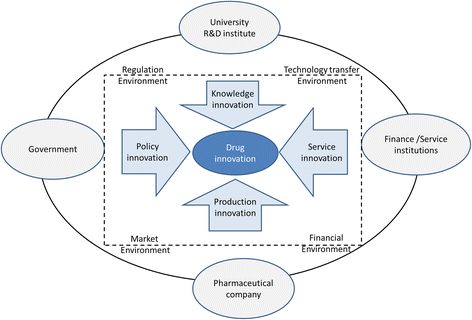India, a country of 1.4 billion people, faces significant healthcare challenges. With a rapidly growing population and a diverse landscape ranging from bustling metropolises to remote rural villages, providing accessible and affordable healthcare to all citizens is a monumental task. However, in recent years, India has been making remarkable strides in addressing these challenges through innovative and cost-effective solutions. Let’s dive into how the country is leveraging affordable innovation to transform its healthcare landscape.
The Current State of Healthcare in India
Before we explore the innovative solutions, it’s crucial to understand the current healthcare scenario in India. The country’s healthcare system is a complex mix of public and private providers, with significant disparities between urban and rural areas.
Public vs. Private Healthcare
India’s healthcare system is characterized by a stark contrast between public and private sectors. The public healthcare system, while extensive, often struggles with inadequate infrastructure, staff shortages, and quality issues. On the other hand, the private sector, which accounts for a significant portion of healthcare delivery, is often criticized for being expensive and inaccessible to a large segment of the population[1].
Urban-Rural Divide
One of the most pressing challenges in Indian healthcare is the urban-rural divide. While urban areas have seen a proliferation of world-class hospitals and medical facilities, rural areas often lack even basic healthcare infrastructure. Approximately 86% of medical visits in India are from individuals living in rural areas, with a majority traveling over 100 km to reach available healthcare facilities[4].
Financial Burden
The financial burden of healthcare in India is substantial, with about 82% of healthcare expenses being paid out-of-pocket by patients[4]. This situation often pushes families into poverty or forces them to forego necessary medical treatment.
The Need for Affordable Innovation
Given these challenges, it’s clear that traditional approaches to healthcare delivery are insufficient. This is where affordable innovation comes into play. By leveraging technology, frugal engineering, and innovative business models, India is finding ways to provide quality healthcare at a fraction of the cost.
What is Affordable Innovation?
Affordable innovation, also known as frugal innovation or jugaad innovation, refers to the process of developing high-quality, low-cost solutions to address complex problems. In the context of healthcare, it involves creating medical devices, diagnostic tools, and healthcare delivery models that are accessible and affordable to the masses.
Why is it Crucial for India?
For a country like India, with its vast population and limited resources, affordable innovation is not just beneficial – it’s essential. It allows for the rapid scaling of healthcare solutions, reaching even the most remote and underserved communities.
Key Areas of Affordable Innovation in Indian Healthcare
India’s healthcare innovation landscape is diverse and dynamic, with solutions emerging in various sectors. Let’s explore some of the key areas where affordable innovation is making a significant impact.
Telemedicine and Digital Health
Telemedicine has emerged as a game-changer in improving healthcare access, especially in rural areas. By leveraging mobile technology and internet connectivity, telemedicine platforms are connecting patients with doctors remotely, eliminating the need for long-distance travel.
“Consumers are increasingly seeking “phygital” experiences with seamless integration across channels. Healthtech players have also started expanding into global markets to increase their addressable patient pool, especially for services with a limited willingness to pay in India.”[3]
Companies like Practo and 1mg have revolutionized the way Indians access healthcare information and services. These platforms not only provide telemedicine services but also offer features like online appointment booking, medicine delivery, and access to health records.
Low-Cost Medical Devices
Indian innovators are developing a range of low-cost medical devices that are significantly cheaper than their imported counterparts without compromising on quality. These devices are not just addressing local needs but are also finding markets globally.
For instance, Forus Health’s 3nethra, a portable eye screening device, can detect common eye problems at a fraction of the cost of traditional equipment. Similarly, Biosense Technologies’ ToucHb, a non-invasive hemoglobin measurement device, has made anemia detection easier and more affordable.
Artificial Intelligence in Healthcare
Artificial Intelligence (AI) is playing a crucial role in making healthcare more efficient and accessible. AI-powered tools are being used for early disease detection, personalized treatment plans, and even in drug discovery.
Bengaluru-based Niramai has developed a low-cost, radiation-free breast cancer screening solution using thermal imaging and AI. This innovation is particularly significant in a country where breast cancer awareness and screening rates are low.
Mobile Health (mHealth) Solutions
With over a billion mobile phone users, India is leveraging mobile technology to improve healthcare delivery. mHealth solutions range from simple SMS-based health information services to sophisticated apps for disease management.
The government’s mHealth initiative, mDiabetes, sends personalized SMS messages to help people manage diabetes. Private sector apps like mfine provide AI-powered health assistants and connect users with doctors for online consultations.
Government Initiatives Supporting Affordable Innovation
The Indian government has recognized the potential of affordable innovation in addressing the country’s healthcare challenges. Several initiatives have been launched to support and promote healthcare innovation.
Ayushman Bharat
Launched in 2018, Ayushman Bharat is the world’s largest government-funded health insurance scheme. It aims to provide health coverage of up to INR 5 lakhs per family per year for secondary and tertiary care hospitalization[3]. This scheme has created a massive demand for affordable healthcare solutions, driving innovation in the sector.
National Health Mission
The National Health Mission focuses on improving healthcare infrastructure and services, particularly in rural areas. It has been instrumental in promoting community participation in healthcare decision-making and service delivery[5].
Startup India
The Startup India initiative, while not specific to healthcare, has provided a boost to healthcare startups. It offers various benefits including funding support, tax exemptions, and simplified regulatory processes, encouraging entrepreneurs to develop innovative healthcare solutions.
Success Stories: Indian Healthcare Innovations Making a Difference
India’s healthcare innovation landscape is brimming with success stories. Let’s look at a few examples of how affordable innovation is transforming healthcare delivery in the country.
Aravind Eye Care System
Aravind Eye Care System is a perfect example of a frugal innovation success story. Founded with the mission to eliminate needless blindness, Aravind has developed a unique model that allows it to perform high-quality eye surgeries at a fraction of the cost in developed countries. Their assembly-line approach to eye surgery has been studied and replicated worldwide.
Narayana Health
Narayana Health, founded by Dr. Devi Shetty, has revolutionized cardiac care in India. By adopting a high-volume, low-margin business model, Narayana Health can offer heart surgeries at about $1,500, compared to $100,000 or more in the US. Despite the low cost, their outcomes are comparable to the best hospitals globally.
Biocon’s Insulin Pen
Biocon, India’s largest biopharmaceutical company, developed an affordable insulin pen for diabetics. Priced at less than a third of imported pens, this innovation has made diabetes management more accessible to millions of Indians.
Challenges in Implementing Affordable Healthcare Innovations
While the potential of affordable innovation in healthcare is immense, its implementation is not without challenges. Let’s explore some of the key hurdles faced in scaling these innovations.
Regulatory Hurdles
India’s regulatory environment for healthcare innovations can be complex and time-consuming. While efforts are being made to streamline processes, many innovators still find it challenging to navigate the regulatory landscape.
Resistance to Change
Adoption of new technologies and practices can face resistance from both healthcare providers and patients. Overcoming this resistance requires not just technological solutions but also behavioral change strategies.
Infrastructure Limitations
Many innovative solutions rely on digital technology and internet connectivity. However, infrastructure limitations, particularly in rural areas, can hinder the widespread adoption of these solutions.
Funding Challenges
While there has been an increase in funding for healthcare startups, many innovators still struggle to secure adequate funding, especially for long-term projects that require significant R&D investment.
The Future of Affordable Healthcare Innovation in India
Despite the challenges, the future of affordable healthcare innovation in India looks promising. The healthcare innovation market in India is expected to double to $60 billion by FY28, driven by rising consumerization of health, reconfigurations to the global healthcare value chain, and a deepening of Indian scientific and technological expertise[3].
Emerging Trends
Several trends are shaping the future of healthcare innovation in India:
- Personalized Medicine: With advancements in genomics and AI, personalized medicine is becoming more accessible and affordable.
- Internet of Medical Things (IoMT): Connected medical devices are enabling better monitoring and management of chronic diseases.
- 3D Printing in Healthcare: From prosthetics to surgical models, 3D printing is making customized healthcare solutions more affordable.
- Blockchain in Healthcare: Blockchain technology is being explored for secure and efficient management of health records and supply chains.
Potential Impact
The potential impact of these innovations is enormous. They could significantly improve healthcare access, reduce costs, and enhance the quality of care. Moreover, many of these innovations have the potential to be exported to other developing countries facing similar healthcare challenges.
Role of Public-Private Partnerships
Public-private partnerships (PPPs) are playing a crucial role in driving affordable healthcare innovation in India. These partnerships leverage the strengths of both sectors – the reach and resources of the government and the efficiency and innovation of the private sector.
Case Study: Mohalla Clinics
Delhi’s Mohalla Clinics are an excellent example of a successful PPP in healthcare. These neighborhood clinics provide free primary healthcare services to urban poor. The model combines government funding with private sector efficiency in operations.
Benefits of PPPs
PPPs can accelerate the development and deployment of healthcare innovations by:
- Providing access to government infrastructure and data
- Offering a ready market for innovative solutions
- Sharing risks and resources
- Combining diverse expertise and perspectives
Scaling Up: From Innovation to Implementation
While India has no shortage of healthcare innovations, scaling these innovations to reach millions of people remains a challenge. Here are some strategies that can help in scaling up affordable healthcare innovations:
Leveraging Technology
Technology, particularly mobile and cloud-based solutions, can play a crucial role in scaling healthcare innovations. For instance, cloud-based electronic health records can make patient information accessible across different healthcare providers, improving continuity of care.
Collaborative Ecosystems
Creating collaborative ecosystems that bring together innovators, healthcare providers, government agencies, and funders can accelerate the scaling of innovations. Initiatives like the India Health Fund are fostering such collaborations to address major healthcare challenges.
Innovative Financing Models
New financing models like impact investing and blended finance are emerging to support the scaling of healthcare innovations. These models can provide the patient capital needed for long-term healthcare projects.
Capacity Building
Investing in capacity building, both for healthcare providers and innovators, is crucial for successful scaling. This includes training in new technologies, business skills for entrepreneurs, and change management for healthcare organizations.
Global Implications of India’s Healthcare Innovations
India’s affordable healthcare innovations are not just addressing local needs but are also finding relevance globally, particularly in other developing countries facing similar healthcare challenges.
Reverse Innovation
Many innovations developed for the Indian market are now being adopted in developed countries, a phenomenon known as reverse innovation. For instance, GE’s MAC 400, a portable ECG machine developed in India, is now sold globally.
South-South Cooperation
India is increasingly sharing its healthcare innovations with other developing countries through South-South cooperation. For example, the Aravind Eye Care System model has been replicated in several countries in Africa and Asia.
Global Health Security
India’s innovations in areas like vaccine development and infectious disease management have implications for global health security. The country’s ability to produce high-quality, low-cost vaccines has been crucial in global immunization efforts.
The Role of Education and Research
Education and research play a vital role in fostering a culture of innovation in healthcare. India’s educational institutions and research centers are increasingly focusing on developing affordable healthcare solutions.
Innovation Hubs
Many Indian institutes have set up healthcare innovation hubs. For instance, the School of International Biodesign, a collaboration between AIIMS, IIT Delhi, and Stanford University, focuses on developing affordable medical devices.
Industry-Academia Partnerships
Partnerships between academic institutions and the healthcare industry are crucial for translating research into practical solutions. These partnerships provide students with real-world exposure and companies with fresh perspectives and talent.
Focus on Frugal Engineering
Indian engineering education is increasingly emphasizing frugal engineering principles, preparing students to develop cost-effective solutions for complex problems.
Key Takeaways
- Affordable innovation is crucial for addressing India’s healthcare challenges, particularly in improving access and reducing costs.
- Key areas of innovation include telemedicine, low-cost medical devices, AI in healthcare, and mobile health solutions.
- Government initiatives like Ayushman Bharat and the National Health Mission are supporting and driving healthcare innovation.
- Success stories like Aravind Eye Care and Narayana Health demonstrate the potential of affordable innovation in transforming healthcare delivery.
- Challenges in implementing innovations include regulatory hurdles, resistance to change, infrastructure limitations, and funding challenges.
- The future of healthcare innovation in India is promising, with trends like personalized medicine, IoMT, and blockchain shaping the landscape.
- Public-private partnerships play a crucial role in driving and scaling healthcare innovations.
- India’s healthcare innovations have global implications, contributing to reverse innovation and global health security.
- Education and research are vital in fostering a culture of healthcare innovation in India.
- Scaling up innovations remains a key challenge, requiring collaborative ecosystems, innovative financing models, and capacity building.
FAQs
- Q: What is affordable innovation in healthcare?
A: Affordable innovation in healthcare refers to the development of high-quality, low-cost solutions to address complex healthcare challenges. It involves creating medical devices, diagnostic tools, and healthcare delivery models that are accessible and affordable to the masses. - Q: How is telemedicine transforming healthcare in India?
A: Telemedicine is improving healthcare access, especially in rural areas, by connecting patients with doctors remotely. It eliminates the need for long-distance travel, reduces costs, and improves the efficiency of healthcare delivery. - Q: What role does AI play in India’s healthcare innovation?
A: AI is being used in various aspects of healthcare in India, including early disease detection, personalized treatment plans, and drug discovery. It’s making healthcare more efficient, accurate, and accessible. - Q: How is the Indian government supporting healthcare innovation?
A: The Indian government is supporting healthcare innovation through initiatives like Ayushman Bharat, the National Health Mission, and Startup India. These programs provide funding, infrastructure support, and regulatory assistance to healthcare innovators. - Q: What are the main challenges in implementing healthcare innovations in India?
A: The main challenges include regulatory hurdles, resistance to change, infrastructure limitations (especially in rural areas), and funding challenges. Overcoming these requires a multi-faceted approach involving policy changes, education, and innovative financing models.
Sources cited:
[1] https://www.themediacaptain.com/optimize-headings-for-seo/
[3] https://economictimes.indiatimes.com/industry/healthcare/biotech/healthcare/indias-healthcare-care-innovation-market-to-double-to-60-billion-by-fy28-says-new-report/articleshow/108304662.cms
[4] https://ballardbrief.byu.edu/issue-briefs/healthcare-access-in-rural-communities-in-india
[5] https://www.ncbi.nlm.nih.gov/pmc/articles/PMC10292032/























